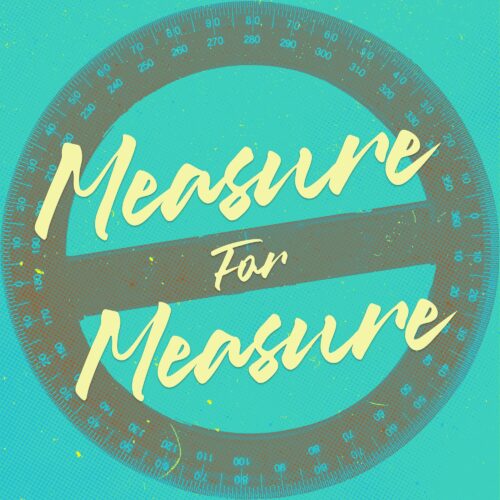Image Courtesy of Measure For Measure.
How would you rank the following: Friends, The Office, and Modern Family? How do you—and other people—differentiate between your favorite shows, books, and podcasts? Is there a universally defined scale? What are some factors we use to compare? These are all important questions that “Measure for Measure” seeks to explore.
Run by the organization Ministry of Ideas and co-hosted by Liya Rechtman and Andrew Middleton, “Measure for Measure” is a limited podcast series that investigates a different form of measurement in our daily lives. The nine episodes, which range from nine to twenty-five minutes in length, are perfect to squeeze in during a walk between classes. The podcast covers topics spanning the Scoville spice scale, used to measure the pungency of chili peppers, to star “heartbeats,” which are pulses that cause a star to expand and contract, leading to variations in brightness. Most importantly, each episode tries to answer the overarching question: why has measurement been crucial throughout human history?
For example, in episode two, Rechtman talks about how the Talmud, a central Judaic text, contains a number of references to measurements, like how much matzah to eat during Passover, that were based on the size of other foods, like olives. Because olive sizes have varied over the centuries, many Jewish people today have tried to update the medieval measurement to determine how much matzah to eat. The story of the olive is one of unity across time—how even though Jewish people are separated from their ancestors by thousands of years, they can still celebrate in the same way, following similar cultural guidelines. Importantly, each episode presents a narrative about using measurement as a way for us to (re)connect with the rest of the world—both past and present.
As I made my way through the series, it became clear where each of the co-hosts’ passions came into the episodes. Rechtman is a Jewish climate activist, while Middleton is a cartographer and ocean enthusiast. As a result, it felt like each episode was a science lesson infused with niche, thoroughly interesting historical and cultural facts—an engaging format that sparks questions about the intersection between the humanities and science. For instance, in episode three, we learn about the Mohs scale for categorizing the hardness of rocks and how it was created by the Habsburg Empire to distinguish itself from competing empires and increase national unity. These stories reinforce the idea that measurement isn’t solely restricted to the International System of Units we use in chemistry class. Instead, it extends far beyond, into almost every facet of human life. At the end of the nine episodes, I still haven’t found a definitive scale to rank podcasts, but I have learned the importance of tools for measurement in our lives and how they turn a continuous reality with infinite possibilities into discrete categories—and maybe that’s the point. For its combination of historical facts, scientific trivia, and broad cultural trends, I’m placing “Measure for Measure” in the category of “highly recommended.”

